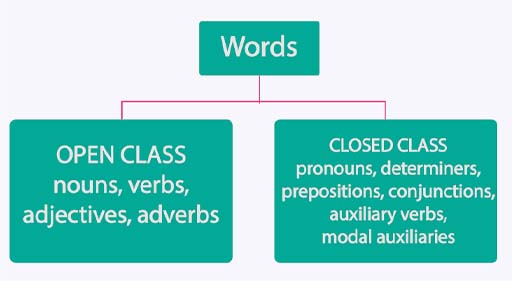2.1 Open and closed class words
You saw in Week 1 that we can create new words from bound and free morphemes. We can make new words using existing words as a model. It’s relatively easy to create new nouns, verbs, adjectives and adverbs, with new ones being coined all the time as new products, gadgets and ways of doing things are invented and developed. Not all new words survive very long, but the Oxford English Dictionary adds about 400–600 new words, senses and revisions to its online edition every three months. The March 2021 update contained a bumper 700 new items, and 750 revised entries (Dent, 2021). This creative capacity of these word classes means they are categorised as open class words. These word classes are open to new members and people show no sign of stopping!

